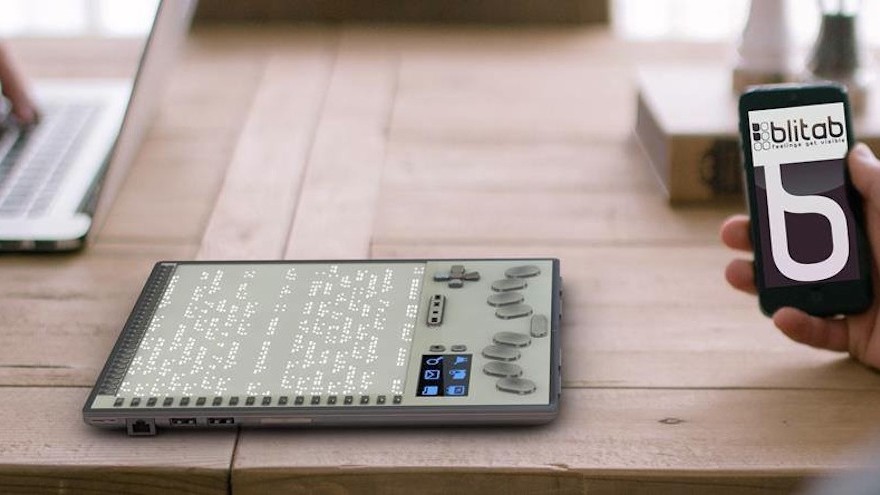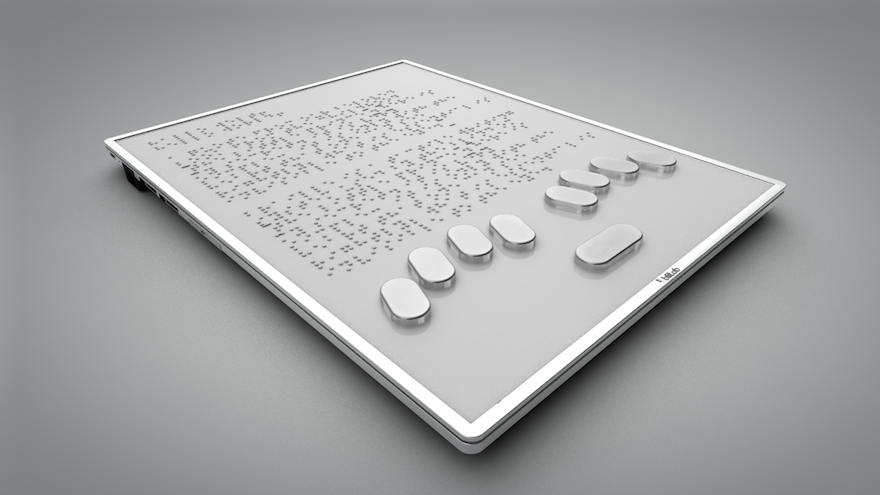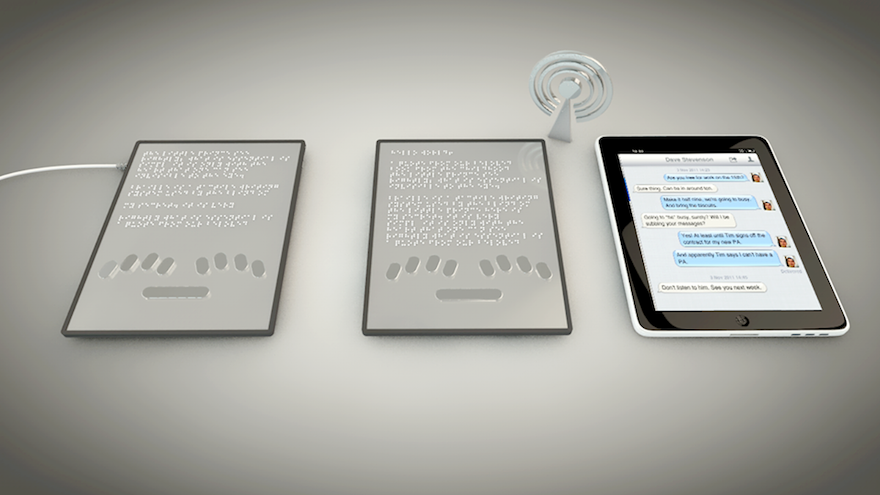With touchscreen dominating the devices of the modern social community, the needs of the blind and visually impaired are often forgotten, but tech start-up Blitab are changing that.
Blitab is a responsive Braille device for reading and writing that functions like a tablet and ebook. The tactile tablet has no mechanical elements; instead the screen is covered with small physical dots (1200 dots in total) that rise and fall on demand, creating a whole page in Braille code.
Many modern and high-tech electronic devices function chiefly through visual displays and don’t take into account the challenges of blind people. The Blitab enables blind and visually impaired people to have the same access to technology, education and entertainment as everyone else, unlocking the Internet for them.
Blind people can feel and read Braille messages and literature on the Blitab screen and can also compose text using an approved Perkins-style Braille keyboard. Just as in ebooks, the Blitab can download books, course books, novels and reports, and solves the problem of transporting heavy printed Braille volumes. In addition the Blitab can convert any text file into Braille code from a USB stick, memory card or web browser.
A real time chat communication platform has also been built into the device’s software, connecting Blitab users around the world. The Blitab also has an inbuilt GPS system that can navigate the user to any place they want to reach.
The idea for Blitab came about a few years ago when its co-founder Kristina Tsvetanova was studying a master’s at the Technical University of Sofia. She noticed that a fellow student had to ask for help when signing into a touch screen device. The Impact HUB and Social Impact Award Team were early supporters of the project, and have helped to develop a global community of designers and innovators interested in how the device can change millions of people’s lives.
The Blitab is still in the prototype phase, but it has the potential to render older and more expensive alternatives useless. The Austrian-based company expects to release the product onto the market in September 2016.









